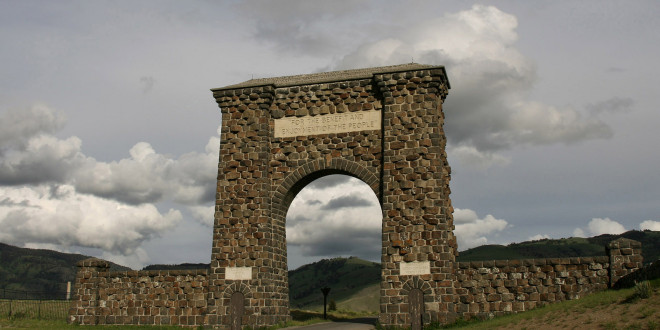A pair of Montana historians says they support a call from a pair of Native American tribes to change the name of Mount Doane in Yellowstone National Park.
Earlier this week, the Blackfoot Confederacy and the Great Sioux Nation announced they would gather outside Gardiner, Montana at Yellowstone’s North Entrance Saturday. The tribes are calling for the removal of Gustavus Cheyney Doane and Ferdinand Vandeveer Hayden’s name from features in Yellowstone National Park.
The issue has been percolating since 2014, when the Rocky Mountain Tribal Leaders Council voted to pursue a name change. Tribes say they asked Yellowstone officials to consider the name change last year.
Regarding tomorrow’s protest, park spokeswoman Morgan Warthin told the Billings Gazette, “We welcome productive discussions with the tribes now and into the future about this issue.” Warthin added that the NPS has no say over its own geographic names; that authority rests with the U.S. Board on Geographic Names, which has changed names in the past considered offensive to Native American tribes.
Indeed, Indian Pond used to be called “Squaw Lake,” although according to park historian Lee H. Whittlesey, the body of water was originally called Indian Pond. It was renamed as such in 1981.
According to the Gazette, the tribes wish to see Mount Doane renamed First People’s Mountain and Hayden Valley renamed Buffalo Nations Valley.
The protest will start at noon with a ceremonial ride through Gardiner to Arch Park. At 1 p.m., the tribes will present an official request to the National Park Service to change the names.
According to the Gazette, historians Kim Allen Scott and Paul Wylie say Doane’s name has no place in Yellowstone National Park today, given his military record during the Indian Wars and views on Native Americans.
Most infamously, Doane participated in the 1870 Marias Massacre, when an estimated 200 members of the Piegan Blackfeet tribe were murdered in their camp on the Marias River in Montana. The camp was mainly women and children, many of whom were recovering from smallpox.
Doane also participated in the 1877 Nez Perce War, which culminated with Chief Joseph’s surrender near the Canadian border. The same year, Doane was instrumental in recovering the remains of George Armstrong Custer, following the Battle of Little Bighorn.
Wylie, in his book on the Marias Massacre, notes Doane never apologized for his actions—indeed, he was proud of them.
The other figure tribes plan to protest, Hayden, is somewhat less controversial. Head of the 1871 Geological Survey that led to the creation of Yellowstone National Park in 1872, Hayden’s presence looms large in the history of the park.
The tribes, however, say Hayden was an out-and-out white supremacist, arguing that Hayden advocated for Native Americans to give up their culture and become “civilized” or face oblivion. In 1883, Hayden edited a volume on North America that included derogatory stereotypes about Native Americans.
Scott argues Hayden never went beyond words, which makes it hard (per Scott) to put Hayden in the same category as Doane. Zoe Ann Stultz, reference historian at the Montana Historical Society, argues that Hayden’s views were normal and expected for their time, however indefensible they are today.
 Yellowstone Insider Your Complete Guide to America's First National Park
Yellowstone Insider Your Complete Guide to America's First National Park





